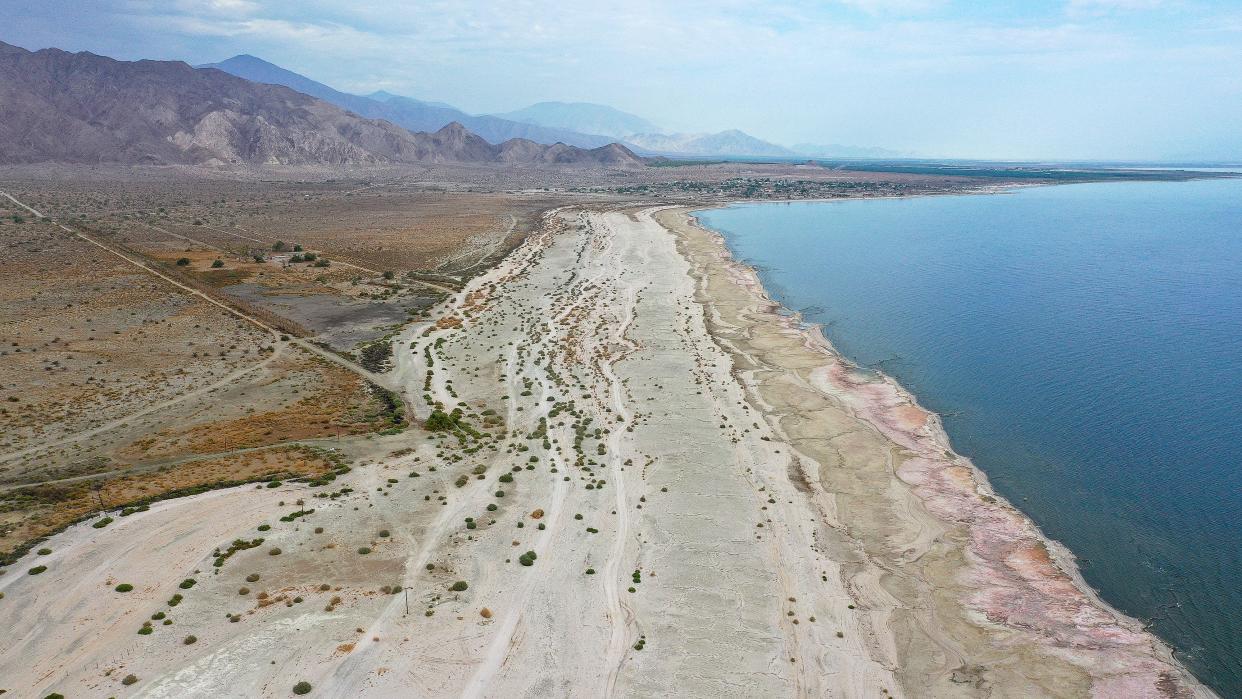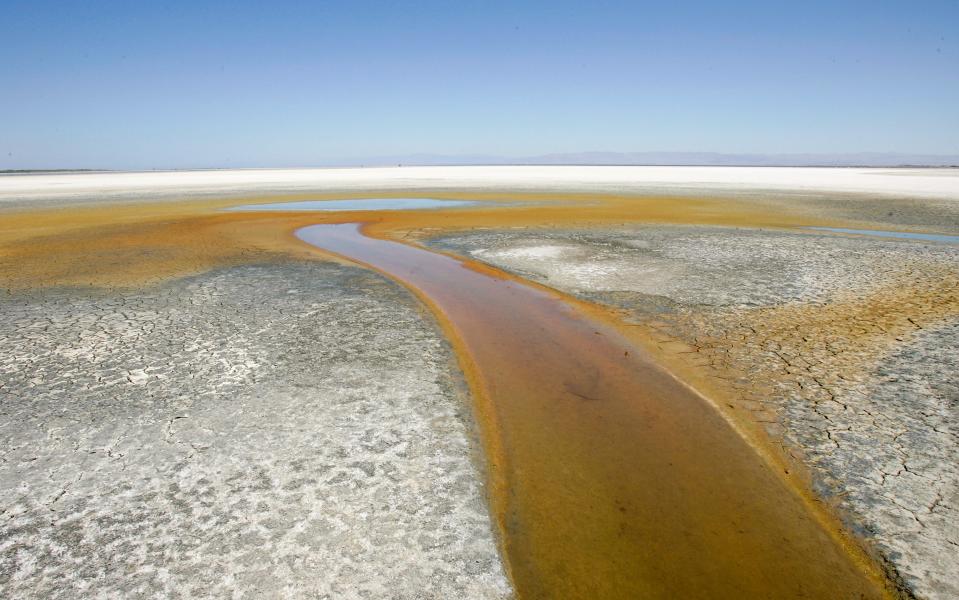Salton Sea Independent Review Panel recommends against importing water to shrinking lake

An independent review panel convened to evaluate water importation concepts for the shrinking Salton Sea is advising against water importation plans, instead recommending a combination of desalination and water from the Imperial Irrigation District.
The state-appointed Salton Sea Independent Review Panel was established in October 2021 to evaluate 18 water importation concepts submitted in response to two Requests for Information issued in 2018 and 2021. The panel was specifically tasked with taking a “long-term” perspective for resolving longstanding public health issues caused by receding shorelines at California’s largest lake.
Thirteen water importation concepts passed an initial screening, and three passed a "fatal flaw" review in July — all of which involved importing water from the Sea of Cortez, which lies between Baja California and mainland Mexico.
But in its fourth and final report issued Thursday, the panel ultimately did not recommend importing water from the Sea of Cortez — or anywhere else — to address long-term problems at the Salton Sea.
"The Sea of Cortez Import Concept was rejected by the Panel based on its high cost, environmental damage, minimal benefits to Mexico beyond construction and operations jobs, and potential that benefits would not be realized," states the summary report, released late Thursday.

The summary report states that the panel "identified two additional approaches to importation" during its process, and subjected them to the same feasibility analysis.
The panel ultimately arrived at three conclusions:
First, that there are "workable approaches" to minimizing the dust stemming from the exposed playa, or shoreline, beyond just flooding the basin with additional water.
Second, that managing salt through desalination will be a central component of long-term management of the sea, and that the region's existing rail system can be used to dispose of salt removed from the sea.
And third, that "it is not necessary to refill the Salton Sea to its mid/late 20th-century volume. A lower-volume sea can also achieve today’s environmental, air quality, and economic goals for the region. This conclusion led the Panel to reframe the role of imported water."
Instead of importing water to bring the sea back to its former levels, the panel is instead proposing constructing a large desalination facility to remove 100,000 acre-feet per year of brine and return 100,000 acre-feet per year of pure water. There would still be a need for water to replace the brine that is removed; however, and the panel suggests using a transfer program with the Imperial Irrigation District to make up the difference.
The panel is recommending this "Colorado River Voluntary Transfer Concept," which is one of the two late-stage submittals the panel analyzed. The concept is based on a compensated and voluntary fallowing program operated by IID from 2003 to 2017, and would involve offering Imperial County farmers the opportunity to fallow their fields in exchange for cash payments, producing "net additional imports" of 100,000 acre-feet per year, enough to offset the water lost from brine production at the desalination facility.
Basically, the desalination plant would remove 200,000 acre-feet of salty water from the sea each year, desalinate it, and return 100,000 acre-feet of pure water to the sea. The remaining 100,000 of salty waste product would be sent to salt evaporation ponds, and the panel proposes making up this lost 100,000 acre-feet through the transfer program with IID.
The sea would lose 200,000 acre-feet of salty water a year, and then gain back 200,000 acre-feet of pure water per year. The panel also recommends “kick-starting” the Salton Sea’s recovery with one-time flows of between 100,000 and 200,000 acre-feet of water per year to slow the sea’s growing salinity levels.
One acre-foot equals about 326,000 gallons, or enough water to serve one to two households per year.
After starting with 18 potential water importation concepts, the panel is ultimately recommending none of them, and instead recommends this combination of a large-scale desalination project, water from the voluntary transfer program in IID, dust suppression projects, and a salt disposal plan.
The panel estimates that the Colorado River Voluntary Transfer Concept would have an initial cost of $17 million, compared to $65 billion to $78 billion for a Sea of Cortez import project. After these initial costs, the two Sea of Cortez importation scenarios the panel considered would cost anywhere between $305 million to $3.8 billion per year for operation and maintenance, while the Colorado River Voluntary Transfer Concept would have annual costs between $22.7 million and $2.5 billion.
The Salton Sea, which is roughly twice as salty as the ocean, covers about 325 square miles, almost twice the surface area of Lake Tahoe, but it is rapidly shrinking. Since 2003, the sea's elevation has dropped by about 10 feet and its surface area has shrunk by about 38 square miles, according to the Water Education Foundation, an education and outreach organization.
For more than a century, the Salton Sea was sustained by irrigation runoff in the Imperial and Coachella Valleys and local rivers. Over time, farm-to-city water transfers meant more water headed to San Diego County and the Coachella Valley — and less flowed into the Salton Sea.
The panel envisions a future Salton Sea not with more water, but with the same amount of water but less salt, in addition to dust suppression efforts along the playa.
“The Panel is optimistic that the future of the Salton Sea is bright. That future entails a smaller sea and a larger playa,” states the summary report.
It continues, “A smaller, restored Sea will reduce noxious odors, improve the look of the Sea, and provide recreation opportunities, allowing it to return to being a jewel in the Californian desert, and a place others will want to visit and live next to again.”
The panel will hold a Zoom meeting on Friday from 5:30 to 7:30 p.m. to present its recommendations.
The seven-member panel is coordinated by UC Santa Cruz and chaired by Rominder Suri, a Temple University civil and environmental engineering professor who specializes in water, environment and technology.
Erin Rode covers the environment for the Desert Sun. Reach her at erin.rode@desertsun.com or on Twitter at @RodeErin.
This article originally appeared on Palm Springs Desert Sun: Salton Sea: Panel advises against importing water from Sea of Cortez

